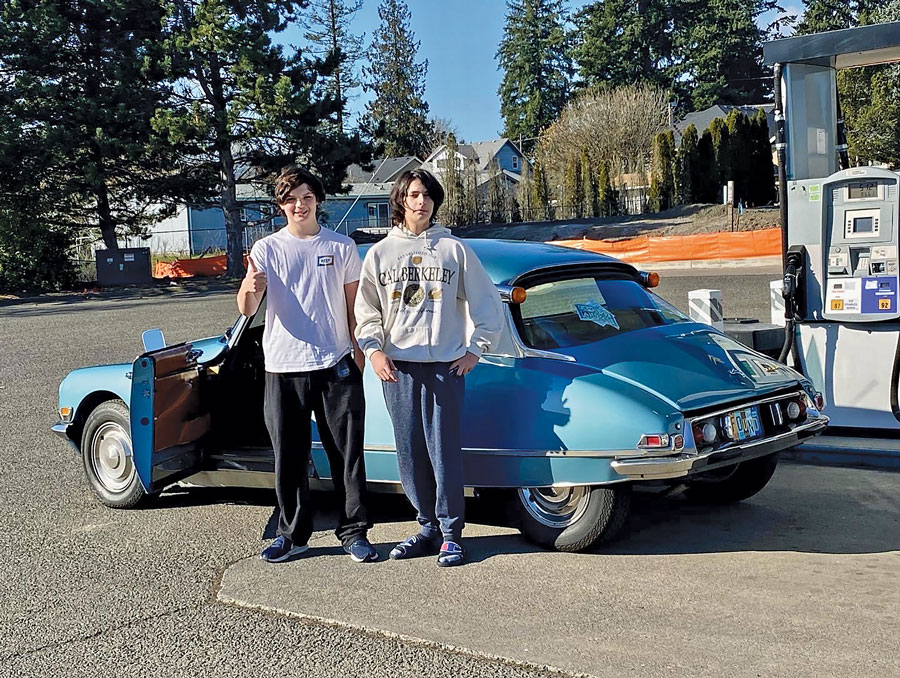
“Dad, it’s like a U-shape. ‘Start’ is to the far left, then you move the wand across the steering column to get to the other gears.”
That’s how my 14-year-old son Bradley explained the arcane and obtuse shifting pattern of the Citromatic transmission in our 1971 Citroën DS21 Pallas.
When I told this story to Executive Editor Jeff Sabatini, his immediate response was, “Of course he understands it. As a non-driver, he has no ‘regular’ shift pattern to compare it to. It’s just what works.”
The King of Two-Pedal Classics
Decoding the Citroën BVH (Boite de Vitesses Hydraulique) gearbox has been a part of my most recent journey into the world of vintage automatics. Like Conquistador Gonzalo Pizarro setting off into the Amazon in search of the Lost City of Gold, I have let neither logic nor the wisdom of others impede my quest.
It has now been three years and six months since I lost the ability to depress a clutch pedal. Each day I confront the yin and yang of my life. On the one hand, I am so very fortunate to be alive and still have my cognitive skills. On the other, I am yearning for the activities I have lost, perhaps forever.
Most important, I am appreciative that I get to watch my children, Bradley and Alexandra, 30, grow and live their lives; they are the sunshine of my life and give me purpose. And it could all have been gone in an instant.
Just because manual-shift cars are no longer an option was no reason to abandon the passion and pleasure I get from old cars. The gearbox is just one part of the experience.
A shift in perspective
As I have bounced around in this world of self-shifting cars, I have come to appreciate just why these transmissions were regarded with wonderment when they were introduced by Oldsmobile in 1939.
Imagine driving without having to put in the clutch. No stalling on hills. No lurching in traffic.
I recall the first time I drove a 1958 Corvette with a 283-cubic-inch V8 and a 2-speed Powerglide. To my surprise, two speeds were plenty given the available horsepower. While a 4-speed would have stroked my ego, it wasn’t necessary for 95% of the driving I did.
The Citroën BVH is, well, more French. Essentially, it is a manual gearbox that you shift without a clutch. It is not fully automatic. It rewards competency and punishes idiocy. I have demonstrated both.
While this manu-matic may seem strange, it was the standard gearbox for the DS. With over 1.4 million cars produced, Citroën must have been on to something. Servicing them was routine in any mechanic’s shop in France.
While the 2.2-liter, 4-cylinder engine puts out just 109 horsepower, manually shifting through the gears gives the car a huge fun factor. Its sleek aerodynamics allow it to cruise easily at 75 mph. Those in other cars must think a spaceship has just passed when I swoosh by.
From Citromatic to Sportomatic
Each time an unexplored vintage non-manual path appears, I am drawn to it. I continue to see the glimmer of that golden city on the horizon.
So as I began to enjoy this manu-matic thing, thoughts of a Porsche 911 Sportomatic popped into my brain. Another manually shifted automatic gearbox. All the fun of a stick shift, with just two pedals.
I had always thought of Sportos as being for sports-car “sissies,” the same way I felt about Jaguar and Volvo automatics — before I bought one of each. But suddenly the Porsche appeared on my “let’s try one of those” list.
Until recently, Sportos changed hands at a 30% to 40% discount from manuals. This put them in my price range. I thought perhaps I could find a basic long-hood 911 Sporto coupe in the $40k range.
That ship has long sailed.
I watched a tidy 1968 911L Targa Sporto sell on Bring a Trailer recently. With commission and transport from the East Coast to Portland, I would have had $120k “invested” in the car. That seemed like real money to me and was more than I was willing to pay.
A modern 997.2 PDK automatic can be bought for less than that. The PDK is an impressively engineered gearbox, and the modern 911 is a much “better,” higher-performance car. I would lose the vintage experience, however. That makes it a no-go for me.
A Sporto remains on my radar as I continue to navigate this world of two-pedal vintage cars. Like a modern-day Diogenes, I hold my lamp high as I seek new experiences. This quest is never-ending, with no shortage of revelatory and entertaining experiences. ♦